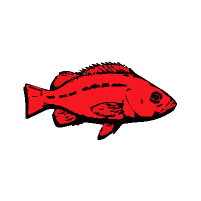Current Standard on Marking & Tagging
The highly migratory nature of salmonids has necessitated coast-wide coordination of marking, sampling, mark recovery, and data exchange by all marking agencies.
Under the umbrella of the Pacific States Marine Fisheries Commission (PSMFC), the Regional Committee on Marking and Tagging (RCMT) has provided the necessary forum since the early 1970s for fisheries agencies to mutually establish guidelines, coordination, and reporting agreements for fin marking and coded-wire tagging on the Pacific coast.
This information was last updated in 2011 and is accessible from the document table at the bottom of this page from the document Regional Coordination and Agreements on Marking and Tagging Pacific Coast Salmonids (updated in 2011).
Below is a high-level summary of a subset of the agreed upon standards as related to CWTs and non-CWTs related marking, please refer to the latest version of the document for details.
Current Status on Use of CWTs and/or Adipose Fin Clips
- Adipose Fin Clip
- no longer exclusively used to indicate the presence of a CWT
- Required Use of the Adipose Fin Clip with a CWT
- California: Chinook
- Use of Blank Wire and Agency Only Wire
- requires submittal of a Request for a Marking Variance to the RCMT
- Tag Codes Cannot be Re-Issued by the Manufacturer
- codes must be unique across all tag types
- Restrictions on Tags Used
-
- any new type of tag affecting regional recovery programs must be approved by the RCMT
- coded wire tags produced by Northwest Marine Technology, Inc., and the former Micro Mark are currently the only tags reviewed, approved, and available.
- Sequential Coded Wire Tags
- purchase of sequential tags is done with the approval of the appropriate tag coordinator to ensure proper use
- Responsibility for Reporting Releases of “Shared” CWT Codes
- the releasing agency is responsible for submitting the release report when a tag group is transferred from the “owner / purchasing” agency to the “releasing” agency. The tag coordinator of the releasing agency is ultimately responsible for reporting of shared tag codes.
Current Status of Non-CWT Related Marking
- No Regional Recovery Effort
- recovery agencies no longer sample the ocean fisheries for fin marks other than the adipose clip
- Duplication of Marks Possible
- duplication of fin marks (single or multiple) for a given species is acceptable
- Coordination of New Mark Requests
- agency fin mark coordinators are no longer required to submit mark requests to the RCMT
Documents
| File | Description | File Date |
|---|---|---|
| Request for Use of Non-CWT Wire Form (2023 version) | This form is to provide information when requesting the use of non-coded wire tag (CWT) wires for marking fish. This form is to be submitted to the Regional Committee on Marking and Tagging for review. The information is necessary to assess impacts of the marking variance to the coastwide coded wire tag (CWT) program. This form replaced the previously named form: Request for Marking Variance (last updated 2022) | 2023 |
| Regional Coordination and Agreements on Marking and Tagging Pacific Coast Salmonids (2001 version) | The Regional Committee on Marking and Tagging objective, interaction with Regional Mark Processing Center, membership, operating procedures, current use of coded wire tags, fin clips, current use of non-coded wire tag related marking, and coordination of new marking (variances) requests. Document updated 2001 (newer version available). | 2001 |
| Regional Coordination and Agreements on Marking and Tagging Pacific Coast Salmonids (2011) | The Regional Committee on Marking and Tagging objective, interaction with Regional Mark Processing Center, membership, operating procedures, current use of coded wire tags, fin clips, current use of non-coded wire tag related marking, and coordination of new marking (variances) requests. This is the updated version of the 2001 document. | 2011 |
| Request for Marking Variances (2022 form version) | Form to be completed when when requesting marking variances from the standard tagging and marking established in the "Regional Coordination and Agreements on Marking and Tagging Pacific Coast Salmonids." The information is necessary to assess impacts of the marking variance to the coastwide coded wire tag (CWT) program (2022 version). | 2022 |
